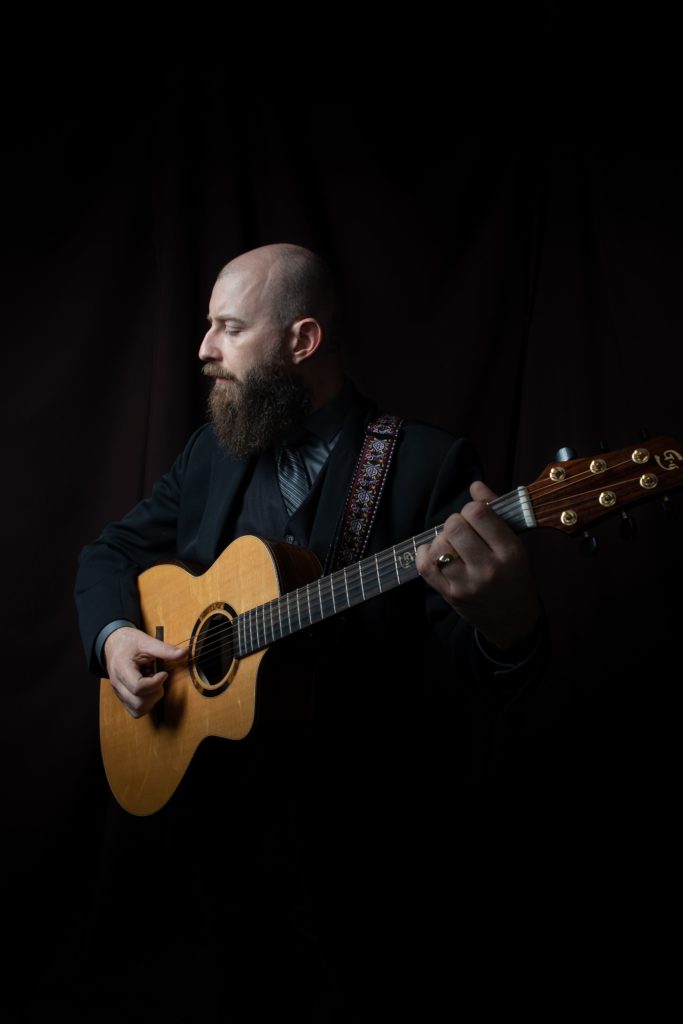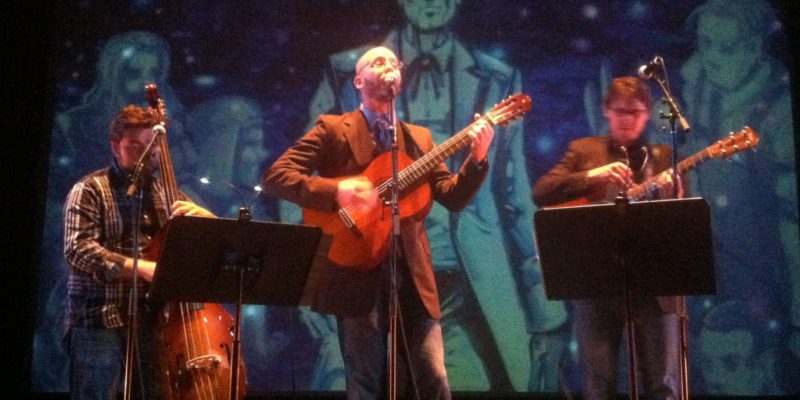LA’s Run Downhill gear up for the launch of their post-pandemic album this coming summer. We caught up with songwriter and founder TJ Troy, to find out more about the project, the band’s journey so far, and their plans moving ahead. Here’s how it went.
* * *
Hey – thanks so much for the chat! For those who don’t know, what does the music of Run Downhill sound like?
A blend of indie/alternative rock and Folk/Americana music; I always call it a collision of Tortoise meets Johnny Cash through the lens of Pink Floyd’s highly cinematic rock, and there’s a bit of Neil Diamond, singer-songwriter flare throughout, especially in this new collection of songs.
How do you capture the feeling of running downhill, in audio form?
The band name comes from the town where I grew up, which features extensive apple and cherry orchards throughout the region. One of my friends growing up was an orchardist and his property included a massive hillside we used to play on; one day, he told me to “watch out for the bull,” which startled me. His family owned a bull and his pasture was this massive area that included the hillside, and he had license to roam freely in the area where we would play. He told me not to worry; if the bull starts to chase you, run downhill. The notion being that the bull’s legs and joints were not made to carry his massive body weight down steep inclines; on flat ground he could take you, but on the hill he had to move very slowly.
Years later, when I had the idea for this band and was releasing the first EP, Giants, I spoke to artist Scott Angle about the bull and the hillside and the idea that I would encounter someone on that hill and he would tell me to run downhill, as fast as I could, straight to the bottom where lies Hell itself, a land of strife, darkness, and lies. As such, “Run Downhill” is a command, a directive; it means “Go to Hell.”
There is a notion that on one’s way down, there is eventually a “rock bottom,” and that hitting rock bottom is necessary in order to start coming back up. I disagree; there’s always more to lose and further to fall, rock bottom suddenly gives way and once again the hill runs down.
The music of Run Downhill confronts this notion as an act of redemption; this is the sound of those who ran down the hillside and, for whatever reason, chose to reverse course and begin an everlong ascent. It is Orpheus’ descent into the underworld in his determination to save his Eurydice; it’s the reemergence of light after a prolonged shrouding in darkness.
“There’s always more to lose & further to fall, rock bottom suddenly gives way & once again the hill runs down.”
The act combines rock and roll music with graphic narratives – unique in itself and increasingly impressive as we delve in. What do you think the visual side of things adds to the experience, and how will you recreate this, if at all, during live shows?
The idea to combine the music with comic art and narrative occurred, so from very early on I was working on this and trying to solve the technical problems involved with the format. There was the problem of how to engage the audience and connect them both visually and sonically. During live shows, we project the Song Comic (as I call them) videos on a screen next to (or behind) the band while we play.
From my perspective as a performer, I’m watching the audience as they watch a video with text balloons while they listen to a song with words (often different from what they’re reading). Within that cognitive load there’s little room for anything else, so the experience becomes intensely immersive and hypnotic to a significant degree. I think this makes the audience build a stronger association to the experience they had seeing it, and hopefully makes it more memorable.
Tell us about Spurs #2.2 / Midnight Road Trip – why this title, and what does the project represent?
The first story arc for the Run Downhill comic is called SPURS, and is about the fictitious town of Kilbourn and the arrival of a railroad line to their town. Our third EP, titled SPURS #1, featured chapters 1-4 of the story; SPURS #2 was intended to cover chapters 5-10, but I wanted to get chapters 7 and 8 out because those were such great songs, so the follow-up album I called SPURS #2.2 (Chapters 5 and 6 would be SPURS #2.1, and chapters 9 and 10 would be SPURS #2.3, right?).
So, SPURS #2.2/Midnight Road Trip combines the two songs from chapters 7 and 8 (Fever and It’s All About The Money), plus five other songs for the Midnight Road Trip part of the album.
Which track from the album would you recommend to new listeners, and why?
I love every song on this album, but for new listeners who are interested in capturing “the sound” of Run Downhill, I think either Pearls before swine or It’s All About The Money are great places to start.
I think the whole album flows beautifully as its own work, so I always encourage listeners to put this album in on commutes or late night drives, turn the volume up, and let your imagination fill in the story on its own…it will take you places.

What’s the story behind It’s all About The Money?
Two things: first, as a songwriter, I liked the simple chord progression with the quarter note heavy Rolling Stones/Charlie Watts sort of groove, and then starting improvising lyrics until I had something of a theme and miniature story in the lyrics. The rest of it was simple improvisation and then crafting a cool modulation at the end; the song sort of wrote itself, which is always a good sign.
As chapter 8 in the SPURS story arc, here’s a little synopsis of the story so far: After an altercation with local rival Jim Ryder, Amos hunkers down at the Rotted Cull for a drink to settle his nerves and soothe his wounded pride: the pretty hairpiece he had made for Sally lies broken on the bar in front of him, the silver pin missing and presumed lost.
The bar is filled with typical revelry, with patrons dancing and carousing left and right. Suddenly, Jim Ryder appears next to Amos, a different girl on his arm, and attempts to pay his bill with the silver piece from Sally’s broken hairpin. Seeing this, and hearing Ryder’s antagonisms, are simply more then Amos chooses to stand… and we quickly learn about the animal buried deep inside the normally taciturn Amos.
Given your background as a Grammy winning artist, how do you make sure to keep new projects completely creative and free from industry expectation or limits?
Since I’m an independent musician, and the funding for this project is my own, I retain full rights and creative control over all the material. That’s simple enough; if you’re accepting a label advance or investor dollars, then (perhaps rightfully) those sources want to have input as to what your creative output is going to be, especially if they want that output to start generating income that they own a percentage of. So if you control the capital basis for the project, the creative control is yours to keep; but, so is the promotion, the branding, the booking, and everything else it takes to have a successful project.
The responsibility for success falls onto your shoulders, as does the responsibility for quality. I am not the type of songwriter or producer that seeks to decipher industry trends in an effort to anticipate what the audience wants to hear and exclusively deliver that to them. I write from instinct and I trust that because it’s authentic and truthful, and I hope that resonates with the audience.
“I am not the type of songwriter or producer that seeks to decipher industry trends in an effort to anticipate what the audience wants.”
What’s the live scene like in LA since things started to open up again, and do you hope to perform further afield at all this year?
Live music has been a slow recovery, both in my freelance career as well as for creative projects like RDh. I’ve had very little live work though it’s starting to come back. From talking to friends and colleagues, the shows that are going up have very few people in the audience (this is primarily in classical and contemporary classical events, as well as jazz/world music events, etc). But I think that’s starting to change and presenters and artists as well are working very hard to build momentum; there’s a lot of energy pent-up from musicians and audiences alike, everyone wants to share and celebrate making music and being together.
As for me, I have some small tours and select dates booked with some wonderful artists, and I’m working on booking for some newer projects. For Run Downhill, my first priority is the release of the new album (which I’m very excited for), and then I’m rehearsing the band and trying a different combination of musicians…I’m switching to guitar, and I’ve brought in Lonn Hayes to play drums, which is very different from previous incarnations of the band where I used to sing from behind the drums. So the live show is going to look and sound very different.
What’s the most important lesson you’ve learned about the music world in your time on the scene?
Perseverance is the single most important attribute a musician can have. Make your music, keep making it, keep sharing it, and do everything you can to get it in front of people. Practice, record every song, and keep doing it. You don’t create a body of work without effort; if you keep writing, keep recording, keep producing material, sooner or later you begin to stand out amongst the crowd of musicians that want to do it, but for some reason or another, don’t.
There is one direction; it is forward.
What’s something about you that fans might be surprised to hear?
I’m not sure if it’s a surprise, but I have been playing since the age of 4 and knew I would be a professional musician in the 4th grade.
Is there anything else we should know?
I have a YouTube channel where I make drum and percussion videos for anyone interested; you can find those videos on the “tjtroymusic” channel.
Run Downhill’s videos can be found on YouTube, and I’m developing a new channel on Rumble that will include more discussion about music and culture. Please follow me there for more updates.
* * *
Check out Run Downhill via their Website.

